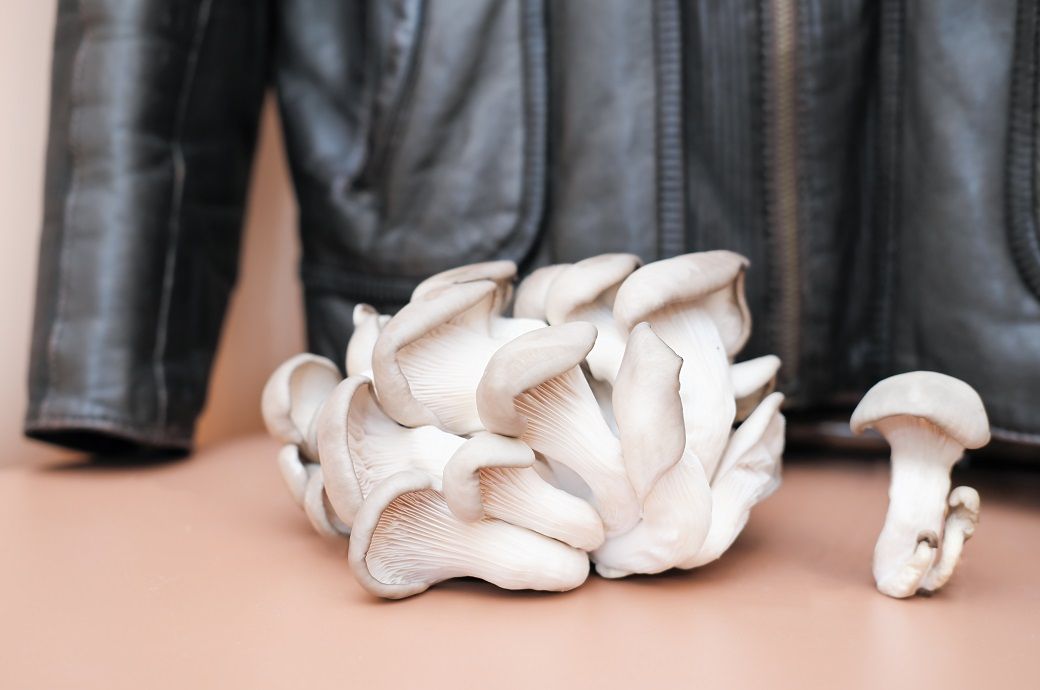
For billions of years, mycelium has grown underground and served as an ecological connective tissue to all life on earth. A sprawling, infinitely renewable, interlaced web, it threads through soil, breaks down organic matter and provides nutrients to plants and trees.
Indigenous communities across the world have for many centuries handcrafted it into hats, bags and pouches.
Leather-like materials
Over the past decade, however, the conversion of mycelium into a fully-scalable and biodegradable alternative to animal leather has been pioneered by a range of companies—most notably New York-based Ecovative Design and its spin-off MycoWorks and California’s Bolt Threads.
Fine Mycelium is the patented method for crafting durable, leather-like materials developed by MycoWorks and its signature product, Reishi, is finding its way into luxury items like Hermès bags.
In the Bolt Threads production process, mycelium is grown into foamy layers that once harvested, can be dyed and processed into sheets of material that can be customised to the desired size, colour, shape and thicknesses.
Mylo—the mycelium leather by Bolt Threads—is being used in footwear, handbags, wallets, phone cases and other products by brands including adidas, Ganni, lululemon and Stella McCartney.
Analysts put the market for mycelium-based leather at around $3 billion in 2024, with healthy growth predicted in the next few years.
A range of further uses for mycelium have been announced in just the past few weeks.
Future Fabrics Expo 2025
At the Future Fabrics Expo in London from June 24-25, for example, the Korvaa Consortium unveiled a sports shoe combining mycelium and other biologically-derived materials drawing on nature’s ability to solve complex design challenges.
Footwear is one of the most complex product categories in fashion and typically requires over 30 distinct material inputs that are often based on conventional plastics. The London-based Korvaa Consortium has reduced this to just five material components, each chosen for its unique strengths.
Ecovative’s mycelium alternative leather serves as the shoe’s sole—grown in just seven days—while its scaffold is made from PHA, a biodegradable, plant-based polyester 3D printed by Indianapolis-based Ourobio.
The shoe’s upper fabric is derived from bacterial nanocellulose supplied by another London company, Modern Synthesis, and the laces and linings are composed of combinations of cotton and lyocell.
“This shoe demonstrates what becomes possible when three distinct biological processes work together,” said Ecovative co-founder and CEO Eben Bayer. “Each material was chosen for what it does best, and together they show that biology can manufacture complex products that traditionally require dozens of synthetic inputs.”
Glastonbury 2025
Meanwhile, at the UK’s famous Glastonbury music festival (June 25-29), the Sunflower Sound System became the first large-scale live music stage to use mycelium-based acoustic panels developed by the Surrey, UK-based Magical Mushroom Company. The tent’s walls featured 25 biodegradable panels made from hemp and mycelium, which will naturally break down in under 50 days, with no need for industrial composting.
NASA
Over in the US, NASA has inevitably been exploring the potential of mycelium for many years in a wide range of applications. Chicago-based Hydefy, for example, is now commercialising a mycelium material discovered during NASA-supported research in Yellowstone National Park.
In a proprietary fermentation process, the mycelium is combined with sugarcane by-products to produce a durable leather alternative.
Hydefy material has already made its debut in the luxury market in the Spring/Summer 2025 collection of Stella McCartney, featured in the Stella Ryder handbag.
Mycotecture Off Planet Project
Next stop space. On June 27, NASA awarded $2 million to the Mycotecture Off Planet Project, led by Dr. Lynn Rothschild at the Ames Research Centre in California. The project is exploring how dormant fungi could be rehydrated and grown into full-scale space habitats on the Moon or Mars, offering radiation protection, structural integrity and ultra-low weight transportation.
Initial experiments have shown promise in creating fungi-based composites and habitat prototypes in simulated space conditions. NASA researchers are also exploring additional uses for fungi in water filtration and mineral extraction—both on and off Earth.
ALCHEMPro News Desk (CG)
Receive daily prices and market insights straight to your inbox. Subscribe to AlchemPro Weekly!